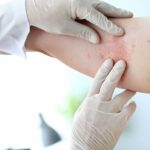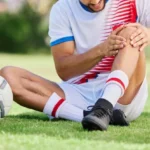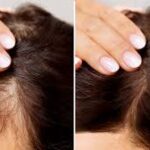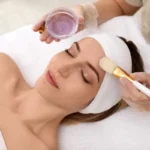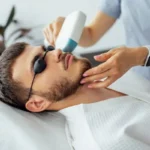Your circulatory system is a complex network that transports blood throughout your body, but sometimes this system encounters obstacles that affect its efficiency. Venous issues occur when veins have difficulty sending blood from your limbs back to the heart, leading to blood pooling. While some vein problems are purely cosmetic, some may indicate underlying health concerns that may require professional evaluation. Here’s information on the signs and symptoms of varicose veins:
What Are Varicose Veins?
Varicose veins are enlarged, twisted veins that often appear blue or dark purple. They happen when faulty valves in the veins allow blood to flow in the wrong direction or pool, rather than traveling back to the heart. While they can occur anywhere in the body, they most frequently develop in the legs and feet because standing and walking increase the pressure in the veins of your lower body.
For many individuals, visible veins cause no pain and are simply a cosmetic concern, but others may experience uncomfortable symptoms. Some common signs and symptoms of varicose veins may include:
- Painful, Achy, or Heavy Sensations in the Legs
- Mild Swelling of the Ankles and Feet
- Discolored Skin Near the Vein
- Cramps in the Legs
- Itchy Legs
What Causes Them?
To understand the cause of varicose veins, one must look at the mechanics of venous insufficiency. Arteries carry blood from your heart to the rest of your tissues, and veins return that blood from the rest of your body to your heart, so the blood can be recirculated. To return blood to your heart, the veins in your legs must work against gravity.
Muscle contractions in your lower legs act as pumps, and elastic vein walls help blood return to your heart. Tiny valves in your veins open as blood flows toward your heart and then close to stop blood from flowing backward. If these valves are weak or damaged, blood can flow backward and pool in the vein, causing the veins to stretch or twist. This condition is known as chronic venous insufficiency. Factors that can increase the risk of developing these issues include age, family history, pregnancy, and prolonged periods of standing or sitting.
What Treats Them?
There are treatments for varicose veins that offer several minimally invasive options to manage symptoms and improve vein appearance. Sclerotherapy is a common procedure often used for smaller varicose veins and spider veins. During this treatment, a doctor injects a solution directly into the affected vein. The solution irritates the lining of the blood vessel, causing it to collapse and stick together. The vessel turns into scar tissue that fades from view over time as the body absorbs it.
Angiography
While not a direct treatment for removing the vein itself, angiography is a diagnostic and sometimes therapeutic tool. It is an X-ray exam of the arteries and veins to diagnose blockages and other blood vessel problems. During an angiogram, doctors can perform procedures such as angioplasty to open blocked veins or place a stent to keep a vein open for some conditions. This makes sure that blood flow is corrected at a deeper level, addressing the root cause of venous insufficiency.
Ambulatory Phlebectomy
For smaller varicose veins near the skin surface, ambulatory phlebectomy is often the recommended method of removal. The doctor removes these veins through a series of tiny skin punctures. Because the incisions are so small, stitches are rarely required, and scarring is minimal. Patients can typically walk immediately after the procedure and return to normal activities quickly.
Learn More About Your Vein Health
Varicose veins are a highly treatable condition. Recognizing the signs early allows you to seek appropriate care and explore the various treatment options available. If you are experiencing discomfort or are concerned about your veins, contact a vascular specialist for a consultation today.

